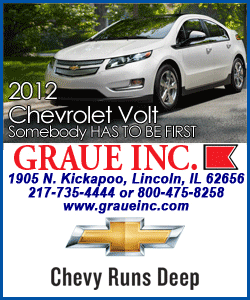 For the past several weeks, the committee has been discussing
how to address parking issues in residential areas of the city. For the past several weeks, the committee has been discussing
how to address parking issues in residential areas of the city.
This came to light when Darrin Coffey approached the city about
parking the trailers for his small business on the street in front
of his home. He asked that the city ease up on the ordinances that
prohibit such parking, or at least consider each situation on a
case-by-case basis.
However, what actually happened was that it was discovered that
the majority of the committee was more in favor of tightening the
reins on this situation. In the first step of their decision-making
process, they concluded that they would recommend to the full
council banning all parking of trailers, boats, campers and RVs on
city streets.
This week, the committee and others discussed another problem in
the city: parking of these same types of vehicles on private
property. There is a separate ordinance on the city books that
prohibits parking of these types of vehicles on private property,
even in driveways.
At a previous meeting, John Lebegue, building and safety officer,
presented a slideshow of instances where trailers, boats and RVs are
being parked in green spaces such as front yards. He also showed
where some vehicles are being parked on what is technically city
right of way and where vehicles are being parked in driveways that
are too short for the length of the vehicle.

The current ordinance prohibits parking of such vehicles in front
yards. Early in the discussion the subject of what a front yard is
came into question. The current ordinance addresses "set-backs,"
which is the space from the front of the house to the front of the
property line, excluding the city right of way.
The ordinance also states that all vehicles must be parked on
all-weather surfaces.
O'Donohue said he felt that at the last committee meeting there
seemed to be a desire for a new ordinance that would be more lenient
on these rules.
At discussion time, David Wilmert said he was first of all
confused about the setback and how it played into the parking issue.
Lebegue offered the definition of the setback and explained that
currently parking of any vehicle in the setback area is prohibited.
Wilmert said he thought what was previously discussed was to
allow the parking in the front yard as long as it was a designated
place there and not just in the grass.
Tibbs commented that generally the front yard of a home is not
paved, so that could not be allowed. O'Donohue said he believed what
was being considered was allowing paved or all-weather surfaces in
the front yard.
Stacy Bacon said she felt the changes that needed to be made
included use of the driveway. She said right now the ordinance
prohibits parking of trailers in the driveway. She noted not
everyone has access to their backyard, so they need to use the
driveway, but right now they can't.
Wilmert said he would take it a step further and say it would be
all right for an additional pad to be poured beside the driveway for
a boat or trailer.
Bacon said she thought that was acceptable. She said it would
have to be done "within reason," and perhaps such pads should not be
placed in the front yard, but adjacent to the driveway would be
acceptable.
Lebegue said one problem to consider is corner lots. A corner lot
technically has two front yards, so an additional pad adjacent to
the driveway could still be considered as filling in the front yard
space.

Kathy Horn said she liked the idea from Wilmert and Bacon, but
she was concerned about footage away from the road. She said she
didn't want to see these vehicles obstructing vision. The answer was
that the trailer would not be allowed on the city right of way. The
right of way also varies but generally would be at least 3 feet from
the curb toward the home. It was also noted that in some areas the
right of way is considered from the lawn-side edge of the sidewalk
to the curb, though not all areas have sidewalks.
David Armbrust said that in regard to RVs especially, it can be
dangerous to the public as far as obscuring vision is concerned, for
those to be parked in a driveway. He said he felt those types of
vehicles should be parked in line with the front of the house.
It was later noted and decided that the parking of RVs should be
addressed separately and at a later date.
O'Donohue said what he was hearing from the committee and others
is that there could be a recommendation allowing for a space
adjacent to the driveway designated for trailer or boat parking.
Neitzel, however, wondered if there should be a restriction on
how wide the adjacent pad could be. She noted that someone might
have a wide lot and pour a pad 50 feet wide. She wondered if that
should that be allowed.
Hoinacki said if they had a wide lot and wanted to go three-wide
on their storage, what would be the harm? But Neitzel countered that
at her house she could have 60 feet of concrete for parking
trailers, and should that honestly be allowed?
[to top of second column] |

Police Chief Ken Greenslate was also in attendance at the meeting
and said he felt everyone had the right to do certain things on
their own property, but at the same time their happiness shouldn't
take away from their neighbors' enjoyment and their property.
Armbrust said that indeed, when he purchased his fifth-wheel and
then a motor home, he approached the neighbors about parking those
in the adjacent lot and made sure the neighbors didn't object. He
said he felt it was only fair that people do this before parking an
RV in their yard.
O'Donohue then said he felt the committee was leaning toward
limiting the width of the additional allowable space.
Wilmert spoke up, though, saying: "I would urge the committee to
keep in mind that we don't have to have a law or an ordinance for
every possible exception. I haven't seen many 50-foot motor homes
blocking views; I've seen more fences blocking views."
It was then that Lebegue said RVs are not typically part of a
parking ordinance involving trailers and boats. He said generally
these are dealt with separately. The committee agreed that they
wanted to address RVs separately.
Neitzel said the typical lot in Lincoln is about 40 feet wide. In
the case of a two-car garage, the driveway could be 20 feet wide,
leaving only 20 feet of grass. She said she still felt residents
shouldn't be allowed to surface their entire lawn, so shouldn't
there be a specific allowable width written into the ordinance?
It was agreed that the width should be 10 feet, or approximately
the width of a normal-sized trailer.
O'Donohue again tried to clarify what the recommendation to the
full council would be. He said he was hearing that the committee
would approve recommending the allowance of an all-weather surface,
placed adjacent to the existing driveway, not to exceed a width of
10 feet, but Hoinacki quickly added "per vehicle."
When questioned on the comment, he responded that if he has two
vehicles, he wants two widths so he can park them side by side.
Neitzel quickly disagreed, saying that should not be part of the
ordinance.

O'Donohue said he thought if the pad were long enough, the
vehicles could be parked end to end instead of side by side. He also
noted that adding a second surface would not be in line with adding
one adjacent to the driveway. "Adjacent to the adjacent is not
adjacent to the driveway," he said.
Wilmert then quipped: "I want my pad 12 foot wide then so I can
walk around the vehicle. Can't we get around having to dictate
everything?"
In the end, a compromise was reached in that the city might allow
the building and safety officer to make an exception on the 10-foot
width on a case-by-case basis. Neitzel suggested this, and O'Donohue
backed it up, saying that Lebegue could make the decision based on
what he thought the size of the property could handle.
The committee's recommendations are to write ordinances only.
Once written by city attorney Blinn Bates, the ordinances would then
be voted on again before passing into city law.
O'Donohue reviewed the two recommendations to be made to the
council:
The first would be to prohibit all street-side parking of
trailers, boats or campers, except for the immediate purpose of
loading or unloading.
The second would be to allow parking of trailers and boats on
personal property with an all-weather surface not to exceed 10 feet
wide and adjacent to the existing driveway.
The committee agreed those would be the recommendations.
When the issue came up later in the evening, a new twist was
added. The question was asked how soon this would go into effect
after the ordinances were actually passed.
The problem was presented that if the law went into effect
immediately, owners of trailers and boats currently parking them on
the streets or in the grass of their lawns would need time to
establish the newly required "all-weather" surface. It was agreed
that the recommendation could be amended to allow some time for the
new law to take effect.
[By NILA SMITH]
Past related articles

|